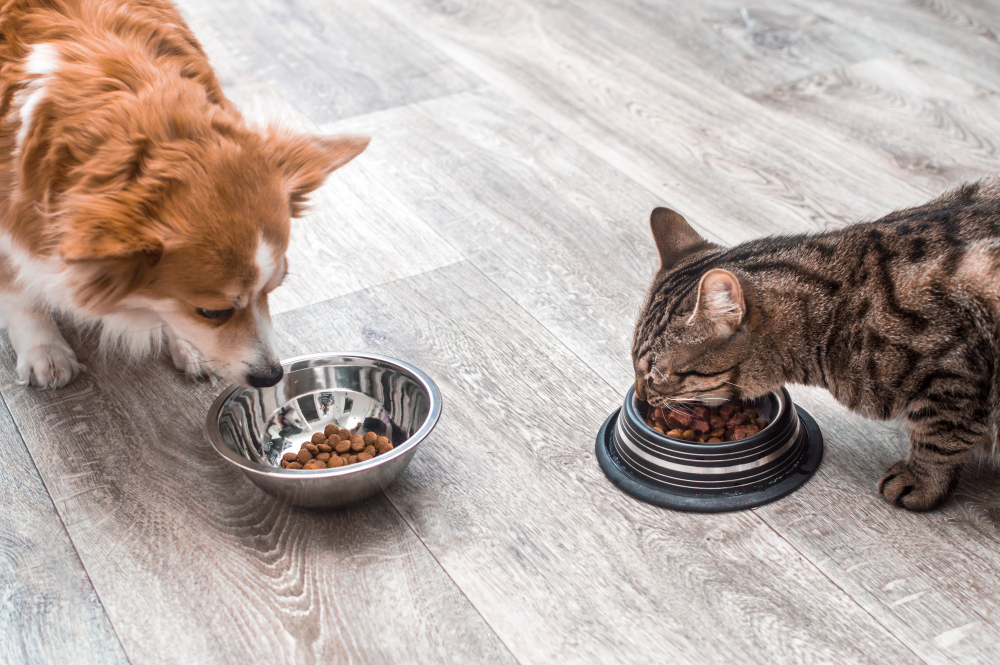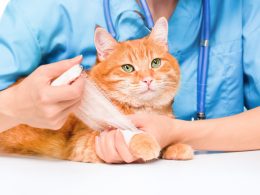Taste, or the gustatory system, is an essential sensory function that enables the recognition and differentiation of five primary flavors: sour, sweet, bitter, salty, and umami. This system’s central organ is the tongue, adorned with taste buds, which are specialized neural cells that discern flavors.
These taste buds are not confined to the tongue but are also found in the palate, epiglottis, pharynx, and larynx. When chemical substances in food stimulate the gustatory receptors, a nervous impulse is triggered, leading to the interpretation of flavors. This complex process unfolds in mere milliseconds.
The Palate of Dogs and Cats: A Comparative Analysis
Taste Buds and Flavor Perception
The ability to perceive flavors varies among species, depending on the number of taste buds in the oral cavity. Dogs possess approximately 1700 taste buds, while cats have a mere 400. This discrepancy leads to a significant difference in their food preferences.
Dogs, with their abundance of taste buds, tend to be less selective about food flavors. Cats, however, are more demanding due to their limited taste buds and inability to detect sweetness. For context, humans have around 9,000 taste buds, providing a broader spectrum of taste perception.
The Role of Smell and Texture
The interest in food for both dogs and cats is determined by a hierarchy of factors. For dogs, the sequence is smell, taste, and texture. For cats, it’s smell, texture, and taste. The sense of smell is paramount, as it is intrinsically connected to taste. While taste buds identify flavors, the nose’s nerves detect odors, and the brain integrates both sensations to appreciate the food’s overall taste.
Dogs and cats have an extraordinary sense of smell, with about 125 million and 200 million sensors for aromas, respectively. This keen olfactory ability plays a vital role in their interest in food, far surpassing humans’ olfactory cells.
Developing Taste Preferences from a Young Age
Introducing various foods during the kitten phase is crucial, especially for cats, who may exhibit neophobic behaviors as adults. Offering different fruits, vegetables, brand feeds, and snacks helps develop their palate and accustom them to diverse flavors. This early exposure will influence their taste preferences in adulthood and ease dietary changes for therapeutic reasons.
For cats, introducing wet food early on is essential, as it aids in water intake, considering their susceptibility to kidney disease.
Addressing Demanding Taste: A Practical Guide
Demanding or capricious appetites, especially in dogs, can be a common issue. This problem often arises when owners mix treats with regular food, leading to a vicious cycle where the pet refuses to consume adequate nourishment.
To reverse this situation, a disciplined approach is required:
- Serve only the primary food.
- Remove the food if the animal refuses to eat within 10 minutes.
- Resupply the food at the next mealtime, repeating the process if necessary.
- Provide food again for the next day’s meal.
- Offer only the main diet with the main foods.
In cases of illness or age-related loss of taste and smell, adding warm water to the food can enhance its aroma and taste, making it more appealing.
The Influence of Food Storage on Taste
Incorrect storage can alter the food’s smell, texture, and taste, often due to exposure to moisture. To maintain the original characteristics, it is advisable to keep the food in its original packaging, specially designed to preserve the product’s quality.
Conclusion
Understanding the palate of dogs and cats is a fascinating journey into the world of sensory perception. From the number of taste buds to the intricate relationship between taste, smell, and texture, these factors collectively shape our pets’ dietary preferences and behaviors. The insights provided not only shed light on the differences between dogs and cats but also offer practical guidance for pet owners to nurture healthy eating habits and address challenges such as demanding taste.
The role of early exposure to various foods, proper storage, and understanding the physiological changes in aging or ill pets underscores the complexity of managing pet diets. It emphasizes the need for a thoughtful and informed approach to feeding that considers the unique characteristics and needs of each animal.
In conclusion, the palate of dogs and cats is a multifaceted subject that requires careful consideration and understanding. Whether you’re a pet owner seeking to provide the best nutrition or simply intrigued by the sensory world of our four-legged friends, this comprehensive analysis offers valuable insights and practical solutions to enhance the well-being and enjoyment of our beloved pets.














